8 vegetable garden hacks that can save you time, money, and give you better crops
From clever watering methods to homemade fertilizer, there are a lot of creative ways to boost the success of your vegetable garden
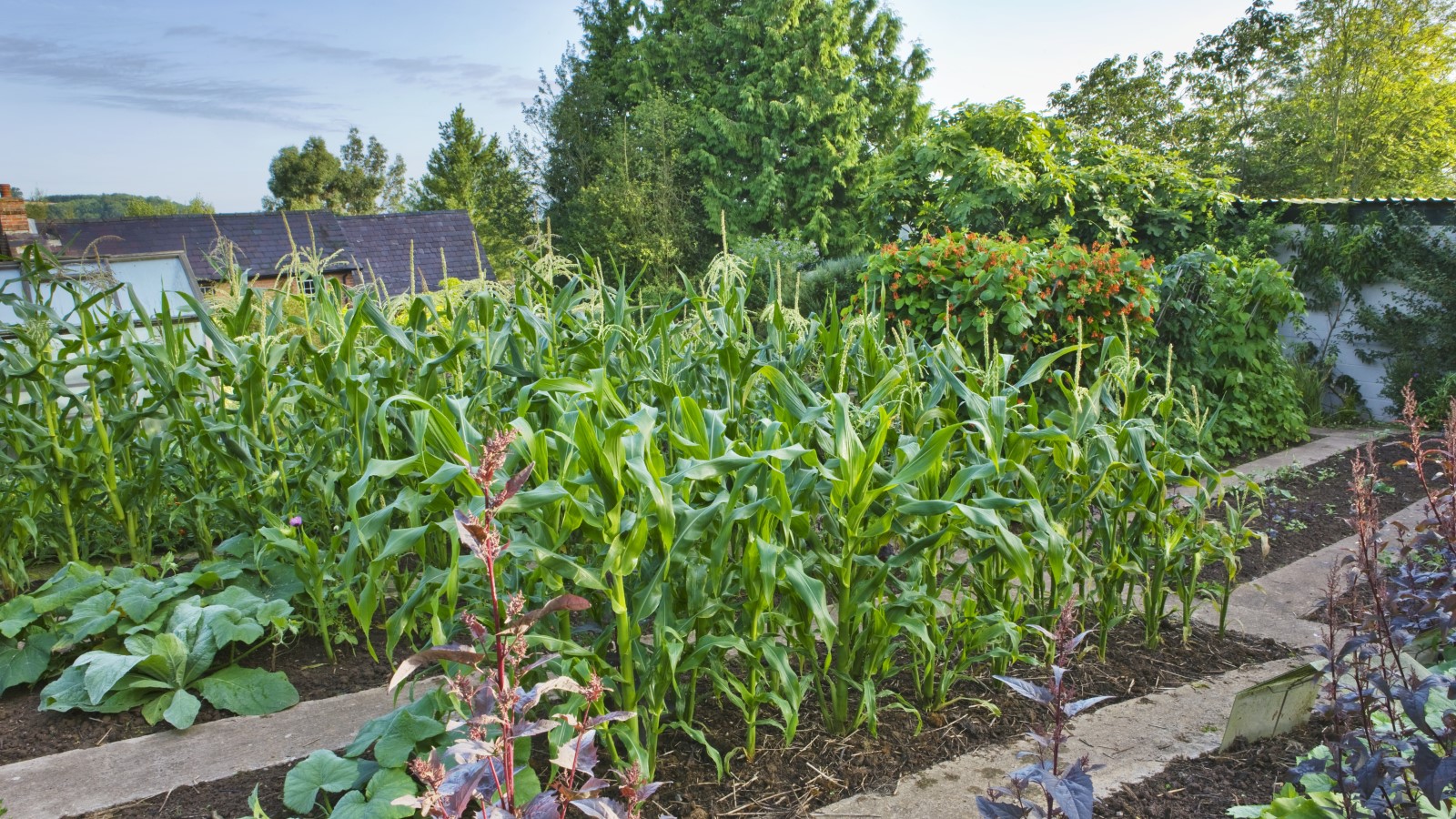

Vegetable gardening is full of creativity and people are always looking at ways to be more self-sustainable, environmentally-friendly, and to save money.
A look around online and on social media can throw up a plethora of vegetable gardening hacks. Many are very popular and proven ways of benefiting your plants, with others maybe open to a bit more debate.
If you are looking for new and unique vegetable garden ideas, then there are some fantastic solutions around that repurpose the plants themselves or turn household items into useful gardening tools.
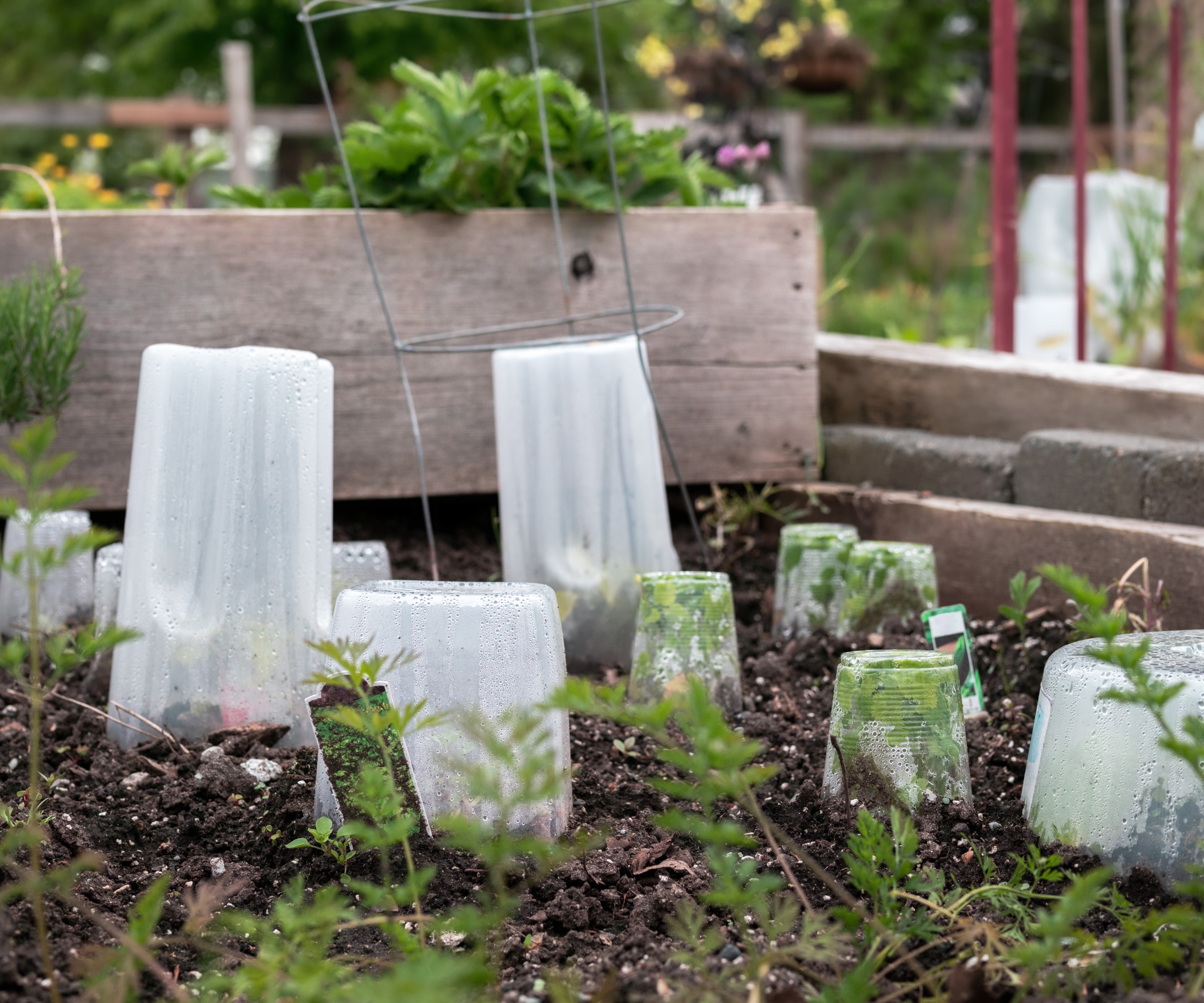
Plastic bottles and cups of many sizes can be repurposed to give protection to young plants
8 great vegetable garden hacks to try on your crops
We take a look at some of the best vegetable garden hacks around that can help you to look after your plants and get a great harvest from your kitchen garden. If you are thinking about starting a vegetable garden then consider adding some of these tips into your planner for the season as they are all budget-friendly and organic measures for growing plants.
All of the hacks are suitable for if you have a large space, a small vegetable garden, or are just growing crops in pots on a patio or balcony.
1. Save homegrown seeds
Saving your own seed from homegrown vegetables is increasingly popular among growers as savvy gardeners look to save dollars and become more self-reliant. Not only does it allow for knowing exactly what and where your plants come from, which is ideal for organic growing, but it helps attract pollinators to the garden. The beneficial pollinators will love the flowers in the areas where crops are left to go to seed.
Anja Eckert, a homesteader and creator of Our Gables Home, claims saving seeds is her favorite hack when growing tomatoes. She says: ‘Every year, I take a few seeds of the first nice tomatoes we get, put them on a piece of paper towel, and dry them thoroughly. Then I store them in a little homemade sleeve in a dry and cool place.
‘With this hack you are also ensuring that you have seeds of those tomatoes that grow well in your particular microclimate and situation.’
As well as tomatoes, other great vegetable crops to save seeds from include peppers, beans, cucumbers and peas. Biennial crops such as beets, leeks and carrots need to be left in the ground over winter to harvest seed from the following summer.
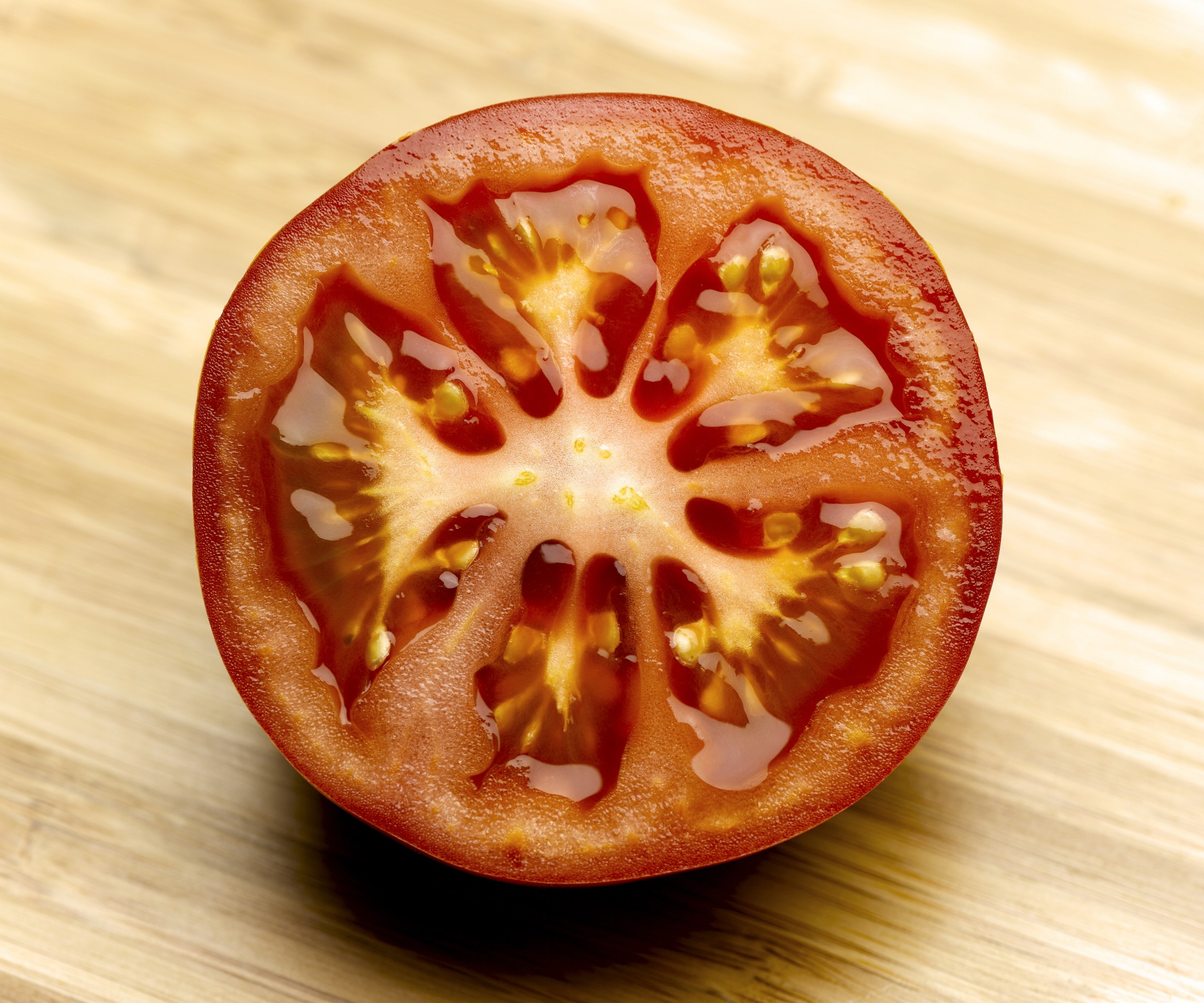
Collecting seed allows you to grow your favorite varieties
2. Use mesh bags to protect crops from pests
Small mesh drawstring bags can serve a few uses in the garden. These bags can be bought cheaply online – such as these white mesh bags on Amazon. They are often used as packaging for jewellery, and are reusable. While they can be used to cover seed heads to collect any seed, they also offer a way to protect vegetables from pests. Hugely popular online videos, such as on TikTok, show gardeners placing the mesh bags over the fruit when growing bell peppers, chilies, tomatoes, or eggplants and pulling the drawstring to close.
However, Dr John La Puma, MD, a regenerative organic farmer and New York Times best selling author in Santa Barbara, California, questions the success of the methods shown on social media. He says: ‘Mesh drawstring bags to protect from pests work primarily for plants that don't need a lot of sun: lettuces, radishes, cole crops like kale. Not for tomatoes, peppers, eggplant.’
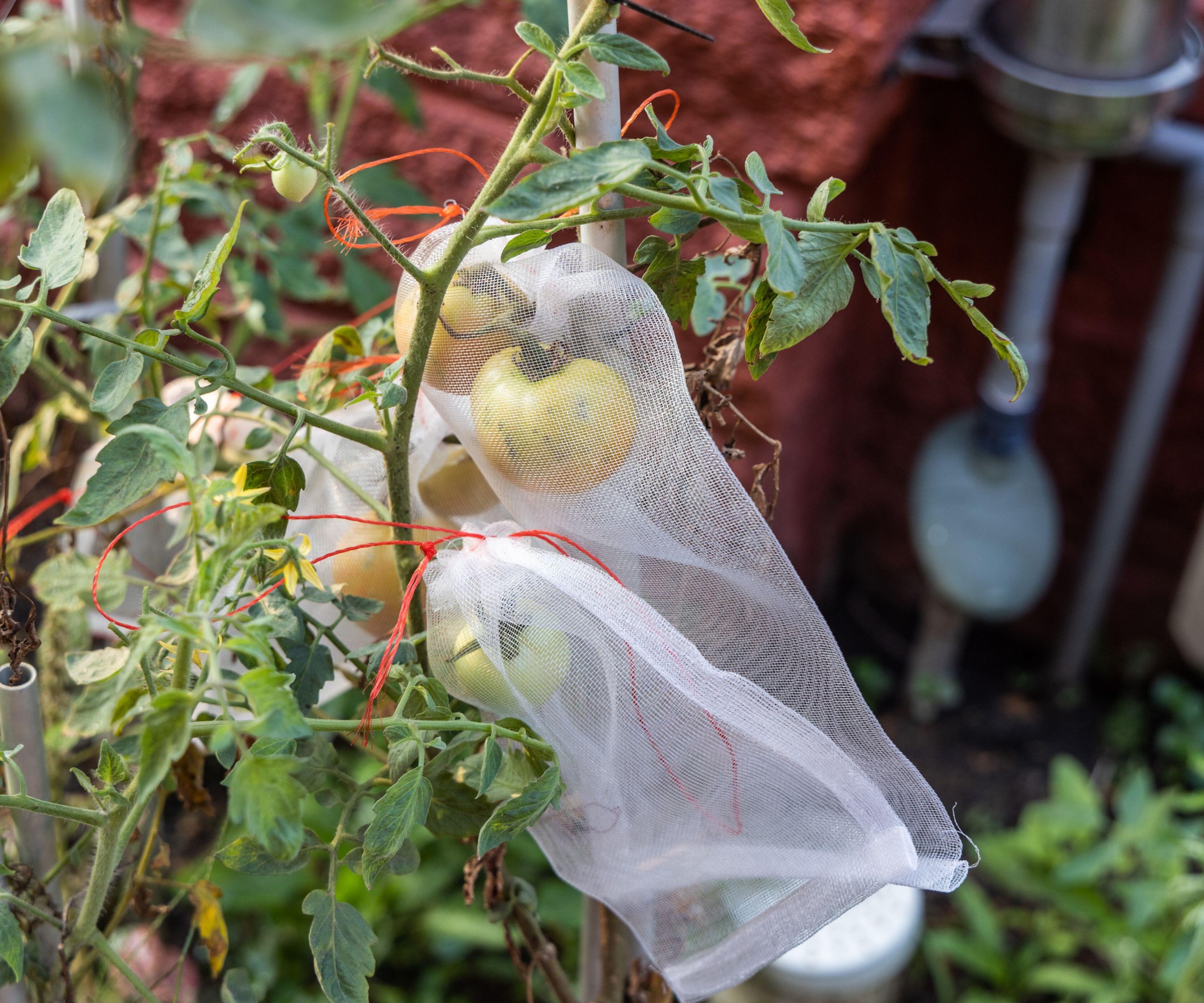
Mesh drawstring bags prevent pests from nibbling on your crops
3. Create a milk jug cloche
Merissa Alink, founder of Little House Living, recommends a clever vegetable gardening hack that utilizes plastic milk jugs. She says: ‘If it looks like frost after you’ve planted your plants outside, you can use milk jugs to protect them. Cut the top off a milk jug, and use it to cover the plant. This will keep it warm, moist, and free from frost and act as a DIY greenhouse until your plants are large enough to be on their own.
‘Just be sure to remove the milk jug before the temperatures get too warm or you will roast your plants,' adds Merissa.
Using milk jugs opens the door to being able to plant crops out slightly earlier and have them grow in a protected environment. It also helps to protect young seedlings from pest damage as part of slug control methods.
Milk jugs offer other potential vegetable garden hacks too, including slicing them in half to use as seed trays and using them to water plants by poking holes in the top to turn it into a watering can.
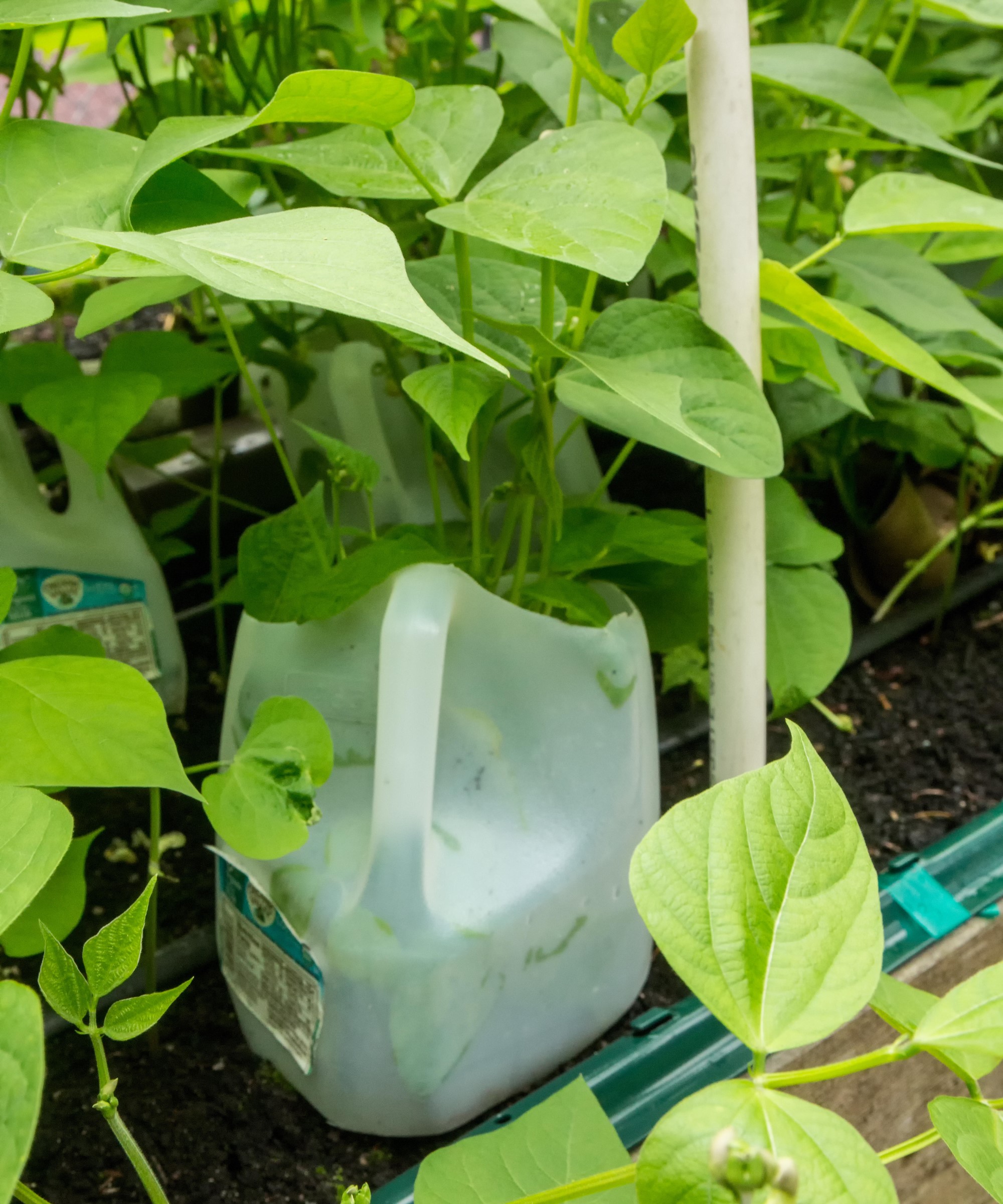
Milk jugs can also protect the bases of plants from getting eaten by pests
4. Upcycle containers for sowing seeds
Seeds are traditionally started in purpose-made plastic trays, but there is a range of other unconventional options for sowing seeds. Growers regularly sow seeds into the cardboard rolls at the center of toilet paper and the entire pot is then planted out complete with seedlings. Eggshells can also be filled with seed compost and sowed into before being planted out to decompose in the ground.
Jennifer Schutter, a certified Master Gardener and editor of Plantcarefully, recommends the hack of using yogurt containers as she claims they are ‘perfect for germinating seeds’. She says: ‘Just clean out your yogurt container, add regular potting soil that you can find at the store, and poke a few holes in the bottom to help the water drain out.
‘You're going to loosely place the lid back on after you've planted your seeds. Just water thoroughly and put the container in bright light. The lid helps create a mini-greenhouse, it works better than just about anything you can buy from the store and really helps keep the humidity up. If the yogurt container had an opaque lid you can just use some cling wrap or even a plastic bag.’
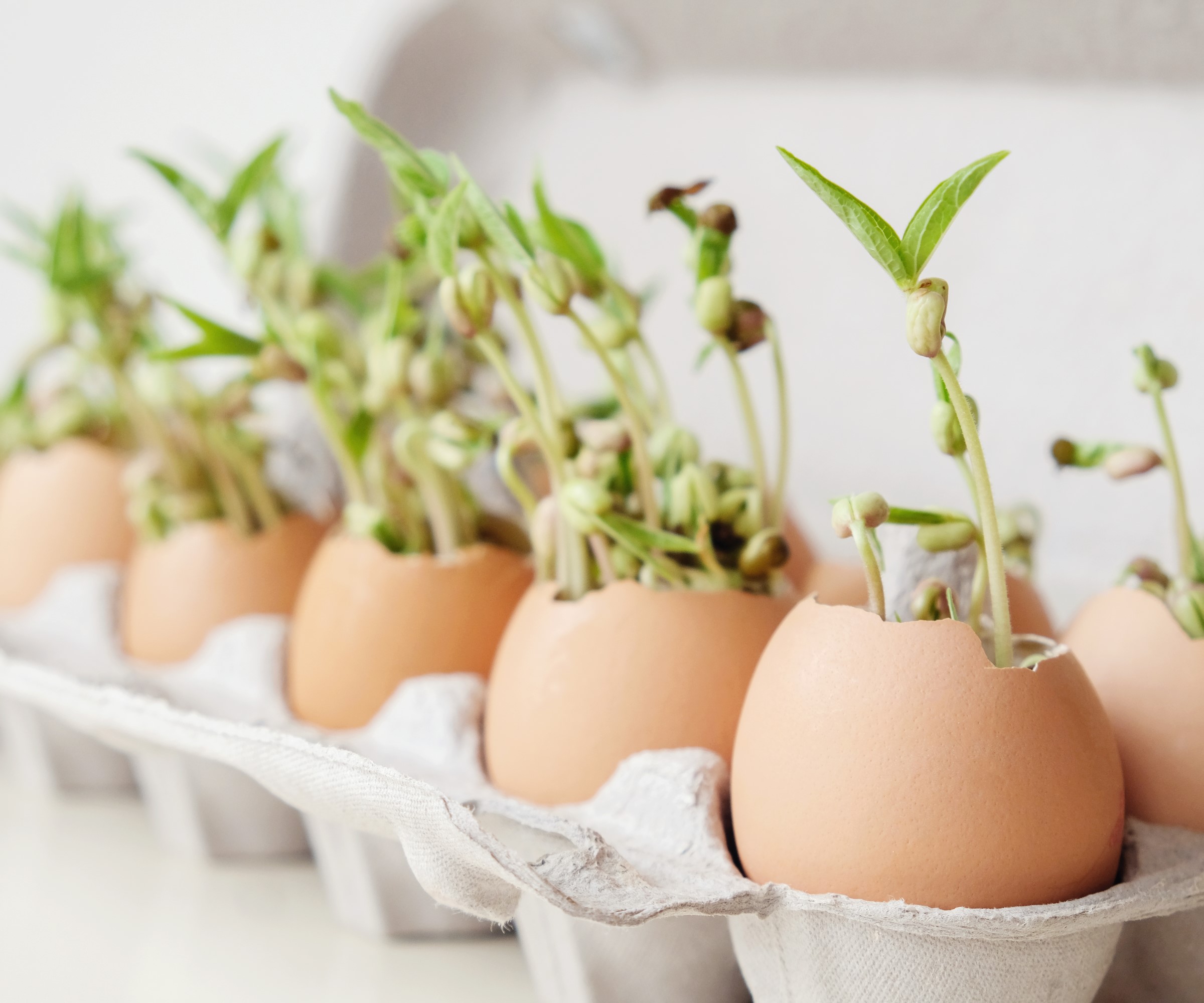
Seeds germinate in eggs and the entire shell is planted into the ground

Jennifer Schutter is a Certified Master Gardener with a field specialty in horticulture. She teaches as a Master Pollinator Steward and is the editor of Plantcarefully. She has taught courses on the Fundamentals of Home Gardening and on Propagation, Entomology, and Pests.
5. Use plastic forks for pest control
Lorraine Thompson, a gardens expert and the founder of Best Florist Reviews, offers a unique gardening hack to help deter animals from causing havoc in your vegetable garden. She advises using small disposable plastic forks that can be purchased cheap – such as the Ecovita Compostable Forks available at Amazon – or easily got from food outlets or with takeaways.
Lorraine claims: ‘If you have problems with animals like squirrels and raccoons digging up your plants, try sticking plastic forks into the soil around the base of your plants. The forks will make it difficult for the animals to dig, without harming them.’
There are other deterrents that can be sourced from around the home to help scare animals away. This includes using aluminium plates, such as those that come with pies, or CDs that are strung up and blow in the wind to repel birds and other animals.
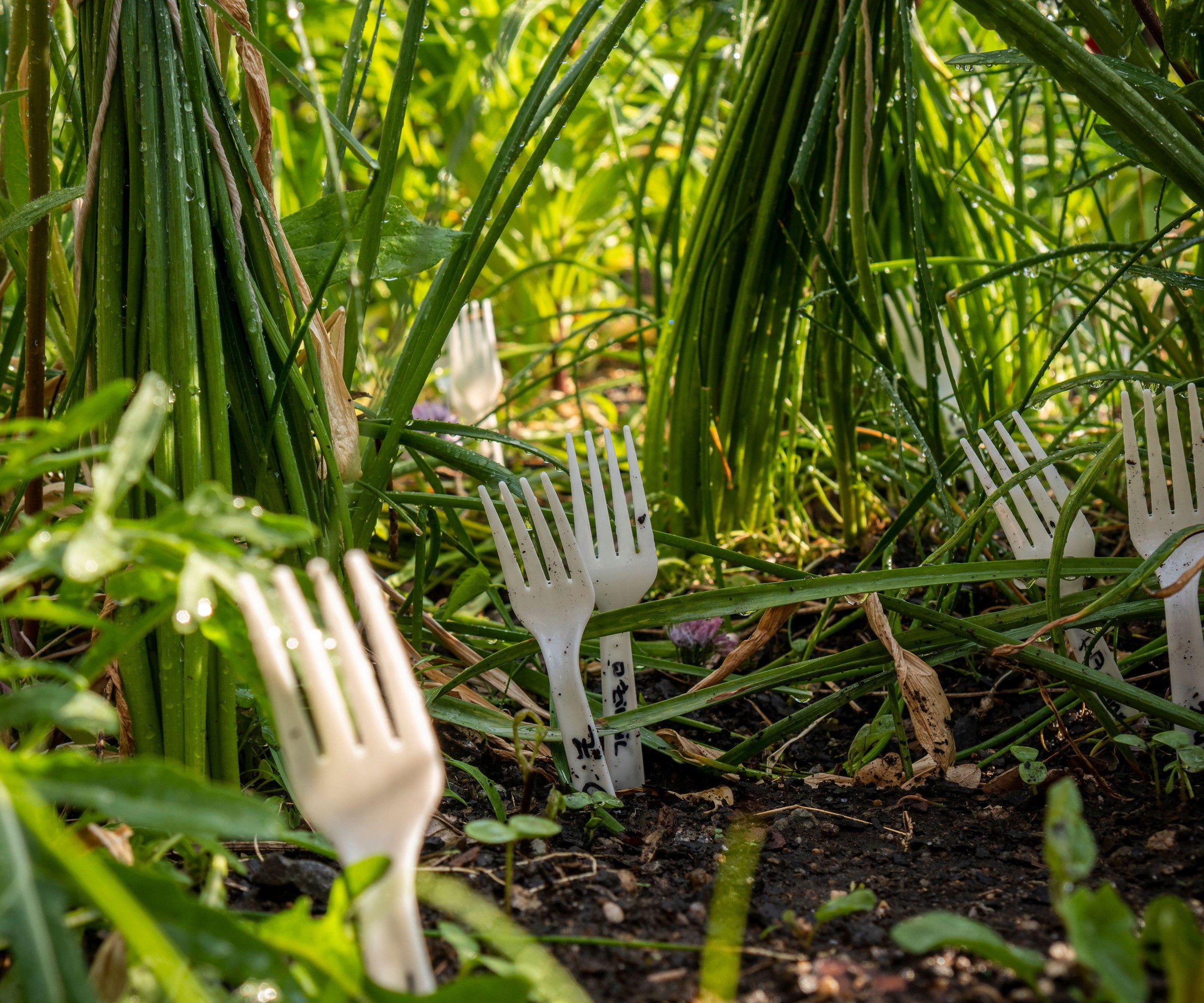
Small plastic forks can be dotted around plants to stop animals digging them up
6. Go for a DIY watering system
Plastic bottles or glass bottles offer a unique way to slowly water plants in a simple and effective manner. It can be either used in the ground or to water crops in pots as part of a vegetable container garden.
If you are using a glass bottle, such as a wine bottle, then simply fill the bottle with water and then make a small hole in the cap or cork using a nail. The alternative is to screw the lid on and then loosen it very gently. Flip the bottle upside down and bury it into the soil and the water should slowly trickle out of the bottle.
For plastic bottles, make small holes in the neck or the cap and bury it. The advantage with plastic bottles is that you can cut off the bottom and then fill it up again when out watering.
Holly Crossley, Homes & Gardens' Senior Content Editor (Gardens), recommends making sure the bottle is stable and won’t fall over – especially if you are using this method to water plants while you're away on vacation. She adds: ‘A DIY watering bottle can keep plants hydrated for a few days in a small or medium planter, making it perfect for a weekend getaway or a few days away.’
You can get Self Watering Spikes at Amazon that attach to most of the common plastic bottles and have adjustable dripping times to be able to water plants over variable amounts of time.
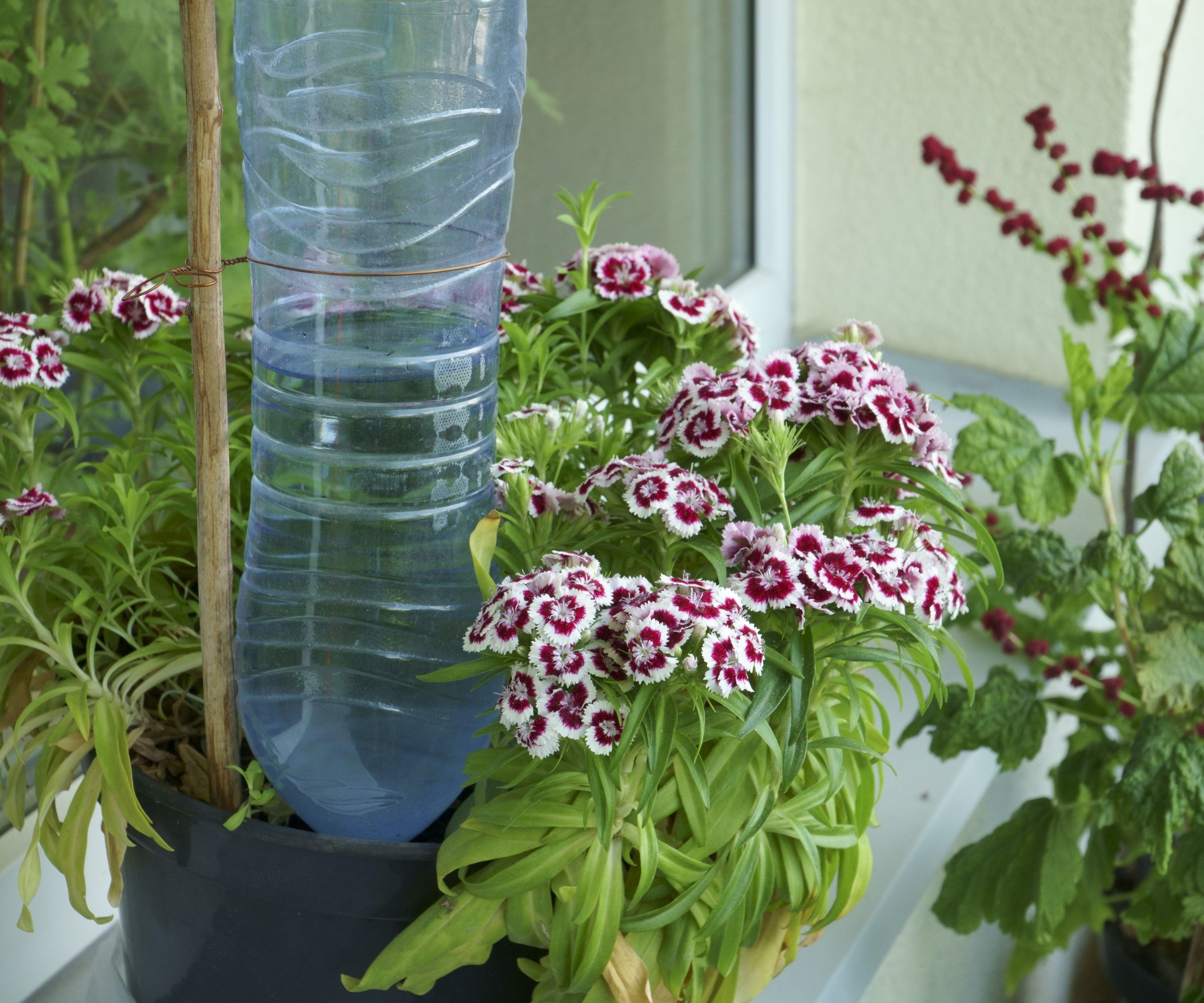
Plastic bottles can provide a slow-release watering system for any kind of plants

Over the years, Holly has been an allotment keeper, a professional gardener, and a botanical illustrator. Having worked for Gardeningetc.com for two years, she now writes about plants and outdoor living for Homes & Gardens. Holly has a particular interest in houseplants (of which she has an ever-growing collection), garden design, and the benefits of gardening for mental health.
7. Make your own homemade fertilizer
A money-saving and environmentally friendly vegetable gardening hack is to make your own homemade fertilizer. Such fertilizers can be made using other plants from the garden – an example is making a comfrey fertilizer – while household waste items can also be used to benefit plants and help them grow big and strong.
You can use eggs in the garden as fertilizer, crushing them up and mixing them into the soil to add calcium to the soil, and coffee grounds can also be sprinkled around plants as they are high in nitrogen and also repel pests such as mites and aphids. Some people even claim that oatmeal is a good fertilizer. Epsom salt, a common item found in cupboards, can also be used as a feed as it is high in magnesium. Lorraine Thompson advises to ‘mix one tablespoon of Epsom salt into a gallon of water and use it to water your plants once a month’.
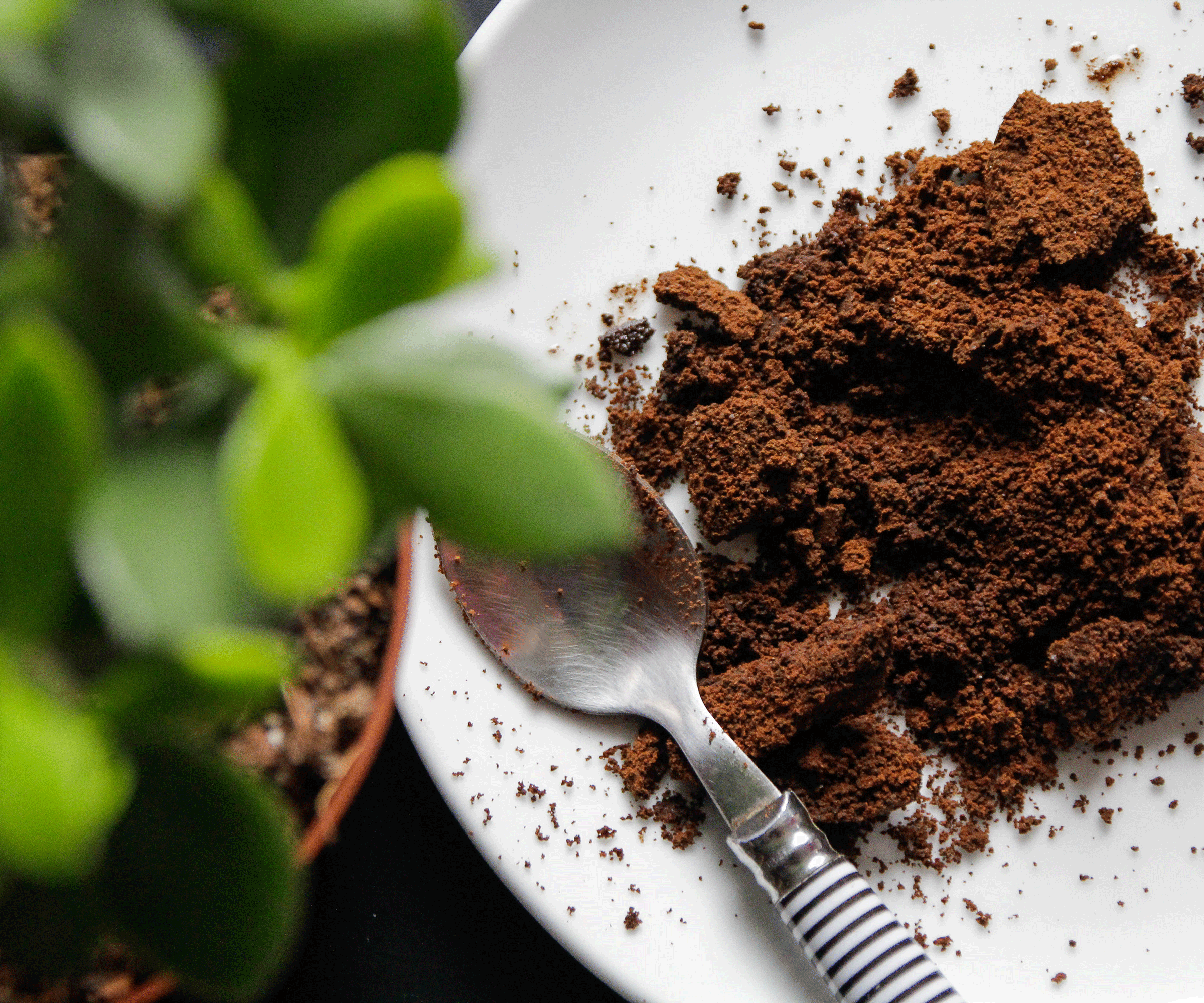
Coffee grounds can be mixed directly into the top inches of the soil
8. Grow vegetables from scraps
Sprouting vegetables from scraps that may normally get thrown in the trash is a fantastic way to get extra life from your home grown vegetables. And there are many crops that are perfectly suitable for starting from off-cuts, including growing lettuce from scraps, or the likes of celery, leeks, and onions. Many crops are sprouted indoors for getting a quick harvest of flavorful sprouts or leaves.
Simply place the cut base of the vegetable in an inch of water and they will quickly start to grow. Beth Murton, Homes & Gardens' Head of Gardens, advises: ‘Make sure to place the cutting in a light place, such as a bright windowsill, and change the water every couple of days – especially if the water changes in color. In a few days there will be signs of growth and you could have something to harvest within a few weeks.’
Once roots have shown on the cuttings, the sprouted vegetables can be planted out in the garden, or transferred into pots, to grow on into new plants. Not only can vegetables be sprouted after being used in the kitchen, but store-bought herbs can be harvested and replanted in soil to grow on. For the more adventurous, pineapples can be grown from tops and growing avocados is possible by using the stone.
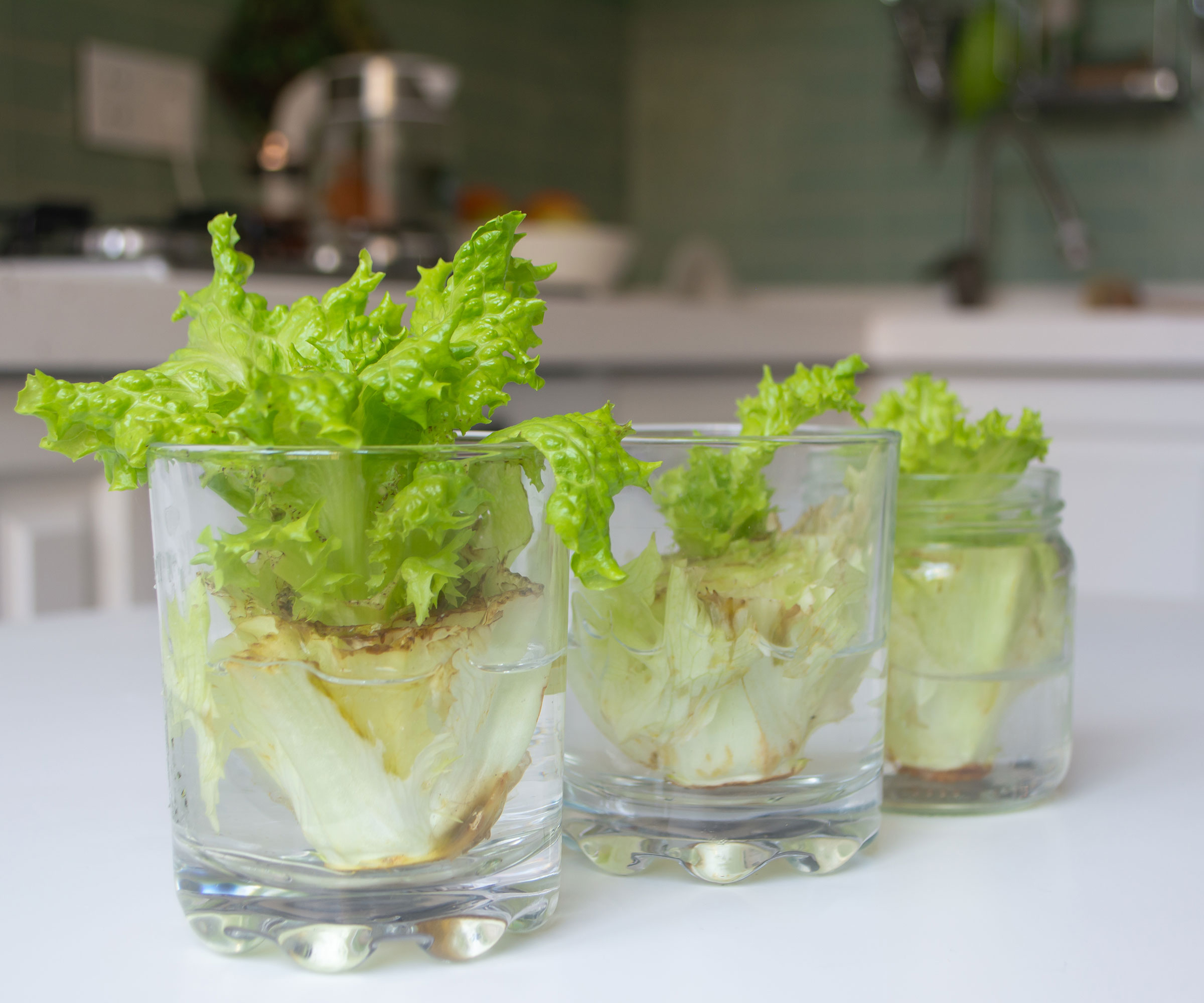
Lettuce can be sprouted from scraps to give a harvest in under two weeks

Beth has been writing about homes and gardens for over 20 years, contributing to a number of leading magazines, including Real Homes, 4Homes, Period Living and Grand Designs. In 2020, Beth took on the role of launch Editor in Chief of Gardeningetc.com, a website dedicated to gardening and outdoor living. At the start of 2023, she moved to Homes & Gardens as the Head of Gardens, bringing her passion and knowledge for all things outdoors to our team.
There is such a wide range and variety of vegetable garden hacks that you can pick and choose from. It all comes down to how you want to garden, and what you want from your growing. There are tips and tricks for gardeners of all abilities, growing vegetables on plots of all sizes.
One of the fun things of growing vegetables is that you are free to experiment and try new things. There will be successes and there will be failures, but the main thing is to enjoy the adventure of growing homegrown food.
Sign up to the Homes & Gardens newsletter
Design expertise in your inbox – from inspiring decorating ideas and beautiful celebrity homes to practical gardening advice and shopping round-ups.

Drew’s passion for gardening started with growing vegetables and salad in raised beds in a small urban terrace garden. He has worked as a professional gardener in historic gardens and specialises in growing vegetables, fruit, herbs, and cut flowers as a kitchen gardener. That passion for growing extends to being an allotmenteer, garden blogger, and producing how-to gardening guides for websites. Drew was shortlisted for the New Talent of the Year award at the 2023 Garden Media Guild Awards.
-
 Charli XCX's dining room is a 'treasure-trove' of one-of-a-kind pieces – it's the most unique hosting space I've ever seen (and surprisingly replicable)
Charli XCX's dining room is a 'treasure-trove' of one-of-a-kind pieces – it's the most unique hosting space I've ever seen (and surprisingly replicable)The singer's Tudor-style dining room features eclectic furnishings, a mix of patterns and bright colors that all work together beautifully
By Hannah Ziegler Published
-
 The 5 worst things you can do to your fridge – these will drive up energy costs and result in pricey and regrettable repairs
The 5 worst things you can do to your fridge – these will drive up energy costs and result in pricey and regrettable repairsIt's crucial to swerve these blunders, appliance experts warn
By Ottilie Blackhall Published